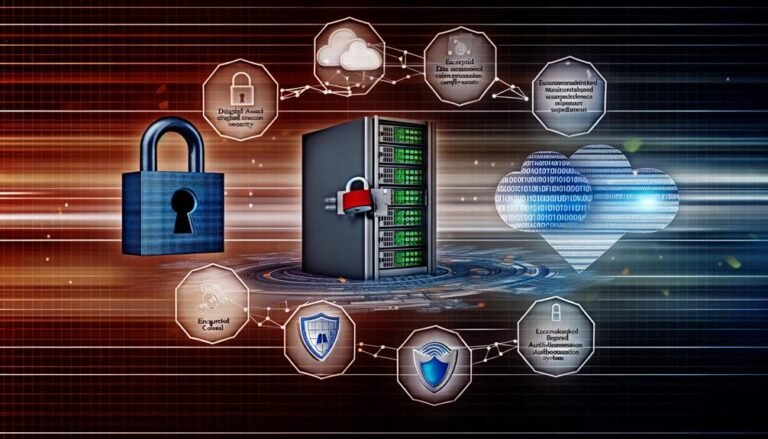International Compliance: Navigating Global Regulatory Landscape For The Workplace
Navigating the global regulatory landscape for the workplace can be a daunting task. With different countries having their own unique set of laws and regulations, ensuring international compliance can seem like an insurmountable challenge.
However, it is crucial for businesses operating across borders to understand and adhere to these regulations in order to avoid legal pitfalls and maintain a positive reputation.
Now, you might think that staying compliant with international regulations is too complicated or time-consuming. It’s true that the regulatory landscape can be complex, but with the right knowledge and strategies in place, you can successfully navigate through it.
In fact, understanding and complying with international regulations not only protects your business from potential legal troubles but also helps you build trust with stakeholders and create a safe and inclusive work environment for your employees.
So let’s dive into the world of international compliance together, exploring how to develop effective strategies, implement data protection measures, and mitigate risks associated with non-compliance.
Key Takeaways
- Understanding and adhering to international regulations is crucial for businesses operating across borders.
- Compliance with international regulations helps avoid legal pitfalls and maintain a positive reputation.
- Taking a holistic approach towards compliance, considering domestic regulations and those in countries where the organization operates or plans to expand into, is essential.
- Implementing comprehensive compliance training programs equips staff with the knowledge and skills to navigate the regulatory landscape effectively.
Understand the Regulatory Landscape
Get ready to delve into the fascinating world of international compliance and discover how to navigate the global regulatory landscape for the workplace! In today’s interconnected world, regulatory changes have a significant impact on businesses around the globe.
Whether it’s new data privacy laws or updated labor regulations, staying compliant is crucial to avoid hefty fines and reputational damage. Understanding the regulatory landscape is key to ensuring your organization operates within legal boundaries while taking advantage of opportunities for growth and expansion.
The first step in navigating the global regulatory landscape is to stay informed about regulatory changes happening around the world. This involves monitoring updates from various government agencies, industry associations, and international organizations that set standards for different sectors. By being proactive in keeping up with these changes, you can anticipate potential impacts on your organization and take necessary steps to adapt your policies, procedures, and operations accordingly.
The global impact of regulatory changes cannot be underestimated. What may start as a local regulation can quickly spread across borders as other countries adopt similar measures or develop their own versions. This interconnectedness requires organizations to take a holistic approach towards compliance. It means considering not only domestic regulations but also those in countries where you operate or plan to expand into.
Now that you understand the importance of understanding the regulatory landscape and its global impact, it’s time to develop a compliance strategy that aligns with your organization’s goals and values. By integrating compliance practices into your business processes from the outset, you can ensure that all employees are aware of their responsibilities and consistently adhere to regulations.
Develop a Compliance Strategy
To develop an effective compliance strategy, you need to establish a dedicated Compliance Team that is knowledgeable and experienced in regulatory requirements.
This team will be responsible for ensuring that all employees are aware of and adhere to the necessary compliance standards.
Additionally, implementing comprehensive compliance training programs will equip your staff with the knowledge and skills needed to navigate the complex regulatory landscape effectively.
Establish a Compliance Team
Build an effective compliance team by assembling a group of skilled professionals who will navigate the complex global regulatory landscape for your workplace. To establish a compliance team that’s both efficient and effective, consider the following key elements:
- Diverse Expertise: Ensure your team includes professionals with diverse backgrounds and expertise in areas such as legal, risk management, ethics, and data privacy. This diverse skill set will enable your team to tackle various compliance issues from different angles and provide well-rounded solutions.
- Clear Roles and Responsibilities: Clearly define the roles and responsibilities of each team member to avoid confusion or duplication of efforts. Assign specific tasks based on individual strengths and expertise to maximize efficiency.
- Strong Leadership: Appoint a competent leader who can effectively manage the compliance team. This person should possess strong leadership skills, in-depth knowledge of relevant regulations, and the ability to make informed decisions under pressure.
- Ongoing Training and Development: Provide continuous training opportunities for your compliance team members to keep them updated on evolving regulations and best practices. Encourage professional development through certifications or attendance at industry conferences.
- Collaboration with Other Departments: Foster collaboration between your compliance team and other departments within your organization. Regular communication with departments such as human resources, finance, IT, and operations will help ensure that compliance considerations are integrated into all aspects of business operations.
By building a strong compliance team with diverse expertise, clear roles, strong leadership, ongoing training opportunities, and collaboration with other departments, you can enhance the effectiveness of your organization’s compliance efforts.
Next up is implementing comprehensive compliance training programs that equip employees with the necessary knowledge to adhere to global regulations seamlessly.
Implement Compliance Training Programs
Improve your organization’s adherence to regulations and foster a culture of compliance by implementing comprehensive training programs that empower employees with the knowledge they need to navigate the ever-changing compliance landscape. Compliance training is essential in ensuring that employees understand their responsibilities, are aware of potential risks, and can make informed decisions when faced with compliance-related issues. Effective compliance training goes beyond simply checking a box; it should be tailored to the specific needs of your organization and provide practical guidance on how to comply with relevant laws and regulations.
To ensure the effectiveness of your compliance training program, it is important to follow best practices. First, consider conducting a thorough assessment of your organization’s compliance risks and priorities. This will help you identify the key areas where training is most needed. Once you have identified these areas, develop targeted training materials that address specific regulatory requirements and potential pitfalls. Consider incorporating case studies or real-life scenarios into your training content to make it more relatable and engaging for employees.
Furthermore, it is crucial to provide regular refresher courses or updates as regulations evolve over time. Compliance landscapes are constantly changing, so it is important for employees to stay up-to-date on new regulations or changes in existing ones. By regularly monitoring and updating your compliance practices, you can ensure that your organization remains compliant with global regulations.
Incorporating comprehensive compliance training programs not only increases employee awareness but also helps establish a solid foundation for navigating the complex global regulatory landscape.
Monitor and Update Compliance Practices
Staying up-to-date with compliance practices is like navigating a constantly shifting maze of regulations and requirements. It’s crucial to monitor the effectiveness of your compliance program to ensure that it aligns with the ever-changing global regulatory landscape.
By regularly assessing and analyzing your compliance practices, you can identify any gaps or areas for improvement. This continuous monitoring allows you to make necessary adjustments and enhancements to maintain a robust and effective compliance program.
Monitoring the effectiveness of your compliance practices involves collecting relevant data and metrics to assess how well your program is performing. This can include tracking key performance indicators (KPIs) such as completion rates for training programs, incident reporting rates, and audit outcomes. By analyzing this data, you can identify patterns, trends, or areas where there may be non-compliance issues.
This information provides valuable insights into potential weaknesses in your current practices and enables you to take proactive measures for continuous improvement.
Continuous improvement should be an integral part of your compliance program. Once you’ve identified areas for enhancement through monitoring, it’s essential to implement changes accordingly. This could involve updating policies and procedures, providing additional training resources, or implementing new technologies to streamline processes. By continuously striving for improvement in your compliance practices, you demonstrate a commitment to maintaining high standards of ethical conduct across your organization.
As you monitor and update your compliance practices on an ongoing basis, it becomes evident that implementing data protection and privacy measures is another critical aspect of international compliance. Ensuring the security and confidentiality of sensitive data plays a significant role in meeting regulatory requirements worldwide while safeguarding individuals’ privacy rights.
Implement Data Protection and Privacy Measures
Now that you’ve established a system to monitor and update compliance practices, it’s crucial to implement data protection and privacy measures. This will ensure that your organization complies with global regulations and safeguards sensitive information.
Data encryption plays a critical role in protecting data from unauthorized access. By encrypting data at rest and in transit, you can prevent potential breaches and maintain the confidentiality of personal information.
Consent management is another important aspect of data protection and privacy. It involves obtaining explicit consent from individuals before collecting or using their personal data. Implementing a robust consent management process ensures that your organization respects individual privacy rights and follows legal requirements. This includes providing clear information about the purpose of data collection, allowing individuals to easily withdraw their consent, and regularly reviewing consent records for accuracy.
To grab the attention of your audience, here are three key steps to consider when implementing data protection and privacy measures:
- Utilize strong data encryption techniques: Encrypting sensitive data adds an extra layer of security by encoding it in such a way that only authorized parties can decrypt it. Implement industry-standard encryption algorithms to protect both stored and transmitted data.
- Develop a comprehensive consent management framework: Create a structured process for obtaining consent from individuals whose personal information you collect or process. Ensure transparency by clearly communicating how their data will be used, giving them control over their information through opt-in/opt-out mechanisms, and maintaining accurate records of obtained consents.
- Regularly review and update privacy policies: Privacy regulations evolve constantly, so it’s essential to stay up-to-date with any changes in laws or best practices related to data protection. Regularly review your organization’s privacy policies to ensure they align with current regulatory requirements.
By implementing these measures, your organization can effectively protect sensitive information while complying with international regulations on workplace compliance practices.
As we move into the next section about mitigating risks and consequences of non-compliance, it’s important to understand the importance of implementing robust data protection and privacy measures. These measures not only help you comply with global regulations but also safeguard your organization’s reputation and mitigate potential legal consequences.
Mitigate Risks and Consequences of Non-Compliance
To mitigate risks and consequences of non-compliance, you need to establish a robust risk management framework. This involves identifying potential compliance risks and assessing their impact and likelihood. It also involves developing strategies to address these risks effectively.
Additionally, maintaining strong ethical standards is crucial in ensuring compliance with regulations and minimizing the risk of non-compliance. This includes promoting a culture of integrity, conducting regular training on ethics and compliance, and enforcing disciplinary measures for any violations.
Establish a Risk Management Framework
Ensure your organization is well-prepared and protected by implementing a robust risk management framework that minimizes potential pitfalls in the global regulatory landscape for the workplace.
Start by conducting a comprehensive risk assessment to identify and evaluate potential risks, including legal, financial, reputational, and operational risks. This will help you prioritize areas of concern and allocate resources effectively.
Once the risks are identified, it’s essential to establish a compliance framework that includes policies, procedures, controls, and training programs to address these risks. Regular monitoring and review of the framework will ensure its effectiveness and enable prompt adjustments as needed.
To establish an effective risk management framework, begin by documenting clear guidelines on how to identify, assess, and mitigate risks across your organization. Assign responsibility for ongoing risk management activities to designated teams or individuals who have expertise in international compliance regulations.
Develop a system for regular reporting on risk assessments and compliance efforts at all levels within your organization. By establishing this framework, you can proactively manage potential pitfalls in the global regulatory landscape while demonstrating your commitment to maintaining strong ethical standards.
Transitioning into the subsequent section about maintaining strong ethical standards, it’s crucial to integrate ethics into every aspect of your organization’s operations.
Maintain Strong Ethical Standards
Keep your organization’s ethical standards at the forefront of decision-making and throughout daily operations, ensuring that integrity is embedded in every action you take. Ethical decision making is crucial in today’s global regulatory landscape. By maintaining strong ethical standards, organizations can build trust with stakeholders and avoid legal and reputational risks. Ethical leadership plays a vital role in setting the tone for an organization’s ethical culture and promoting responsible behavior among employees.
To maintain strong ethical standards, organizations should establish clear guidelines and policies that outline expected behaviors and consequences for unethical actions. This helps to create a framework for ethical decision making by providing employees with a roadmap for navigating complex situations. Additionally, organizations should foster open communication channels where employees feel comfortable reporting any unethical behavior they witness or experience.
| Benefits of Maintaining Strong Ethical Standards | Strategies for Ensuring Ethical Decision Making |
|---|---|
| Builds trust with stakeholders | Establish clear guidelines and policies |
| Avoids legal and reputational risks | Foster open communication channels |
| Promotes responsible behavior | Encourage ethics training |
Ethical leadership is also essential in maintaining strong ethical standards within an organization. Leaders should lead by example, demonstrating integrity in their own actions and decisions. They should prioritize ethics over short-term gains, making choices that align with the organization’s values even when faced with difficult situations. Furthermore, leaders should provide ongoing ethics training to employees to ensure they have the knowledge and skills necessary to make ethical decisions.
Overall, maintaining strong ethical standards is crucial for organizations navigating the global regulatory landscape. By prioritizing ethics in decision-making processes and fostering an environment of integrity, organizations can mitigate risks while building trust with stakeholders. Ethical leadership plays a key role in shaping organizational culture, promoting responsible behavior among employees, and upholding the highest standards of conduct throughout daily operations.
Frequently Asked Questions
How can businesses ensure compliance with international regulations in a rapidly changing global landscape?
To ensure compliance with international regulations in a rapidly changing global landscape, businesses should implement training programs and utilize technology solutions. These measures will help them stay informed, adapt to changes, and mitigate risks effectively.
What are the key considerations when developing a compliance strategy that aligns with various international regulatory frameworks?
Developing cross-border strategies requires ensuring regulatory alignment. Key considerations include understanding international frameworks, conducting comprehensive risk assessments, implementing robust compliance processes, and fostering a culture of ethics and accountability throughout the organization.
How often should compliance practices be reviewed and updated to stay in line with evolving global regulations?
To stay in line with evolving global regulations, you should review and update your compliance practices regularly. The review frequency depends on the pace of changes in global regulations, but typically it should be done at least annually to ensure ongoing compliance.
What specific data protection and privacy measures should be implemented to ensure compliance with international standards?
To ensure compliance with international data protection and privacy standards, it is crucial to implement specific measures. These include data encryption for secure storage and transmission, consent management processes for obtaining and documenting consent from individuals.
What are the potential risks and consequences of non-compliance with international regulations, and how can they be mitigated effectively?
To effectively mitigate risks and ensure compliance with international regulations, implement robust compliance measures. Failure to comply may result in legal consequences, financial penalties, damage to reputation, and loss of customer trust.
Conclusion
In conclusion, you’ve now embarked on a journey through the intricate maze of international compliance. As you navigate this global regulatory landscape for the workplace, remember to stay vigilant and aware of the ever-changing rules and regulations that govern your industry.
Just like a skilled navigator, you must understand the lay of the land and adapt your compliance strategy accordingly. By developing a well-thought-out compliance strategy, you’re equipping yourself with a compass that’ll guide you through the stormy seas of legal requirements. This compass will ensure that your organization not only meets but exceeds expectations when it comes to complying with international regulations.
Like an expert captain at the helm, you can steer your ship towards success, avoiding any treacherous obstacles along the way. However, it’s important to note that complacency isn’t an option in this fast-paced world of global business. You must constantly monitor and update your compliance practices to align with new laws and industry standards.
Just as a watchful sentinel guards his post, you too must remain diligent in safeguarding your organization’s adherence to international regulations. Furthermore, implementing robust data protection and privacy measures should be at the forefront of your compliance efforts. Think of these measures as impenetrable fortresses protecting valuable information from potential breaches or unauthorized access. By fortifying these defenses, you ensure that your organization remains trustworthy and reliable in an age where data security is paramount.
Lastly, always remember that non-compliance carries grave risks and consequences. Just as stepping off a cliff without realizing its height could lead to disastrous results, failing to comply with international regulations can have severe repercussions for both individuals and organizations alike. Therefore, it’s crucial to proactively mitigate these risks by staying informed about evolving regulatory landscapes and taking appropriate actions.
In summary, as you embark on this journey through international compliance, keep in mind that knowledge is power. Arm yourself with a comprehensive understanding of regulatory requirements and develop strategies that surpass mere compliance. By doing so, you won’t only navigate the global regulatory landscape with ease but also ensure your organization’s success in an increasingly complex and interconnected world.








